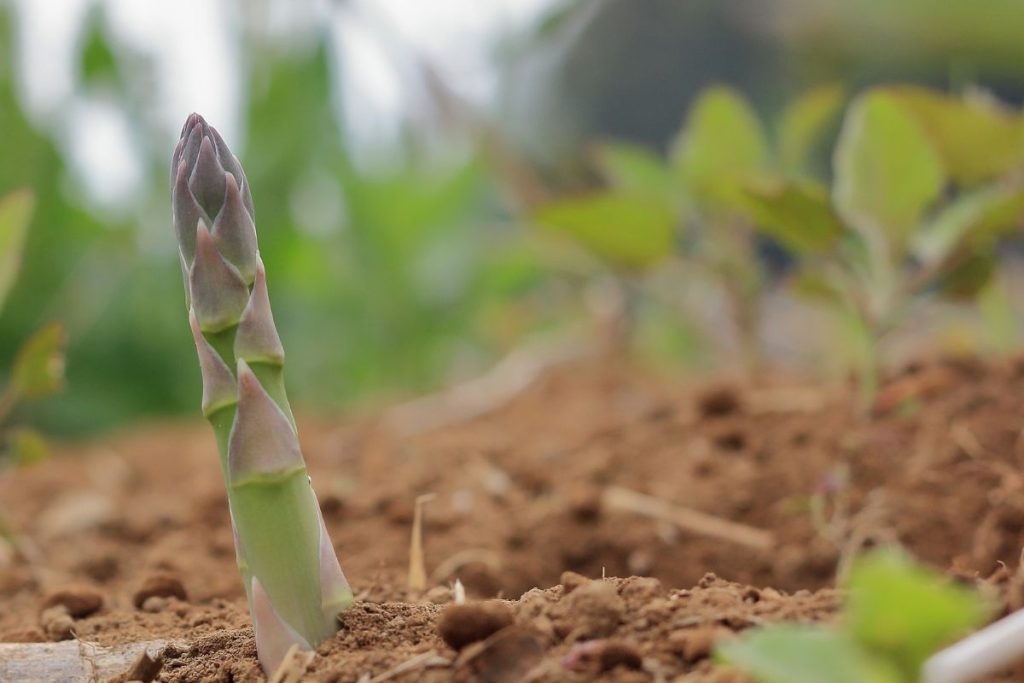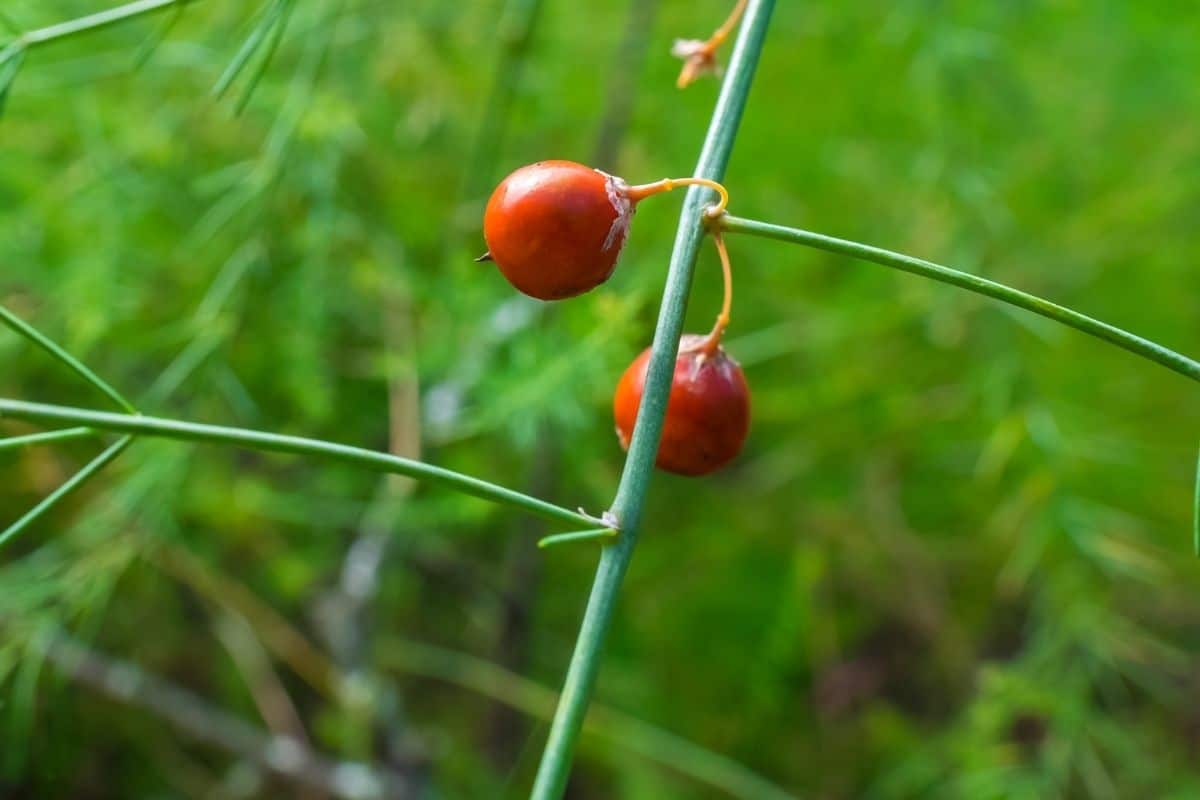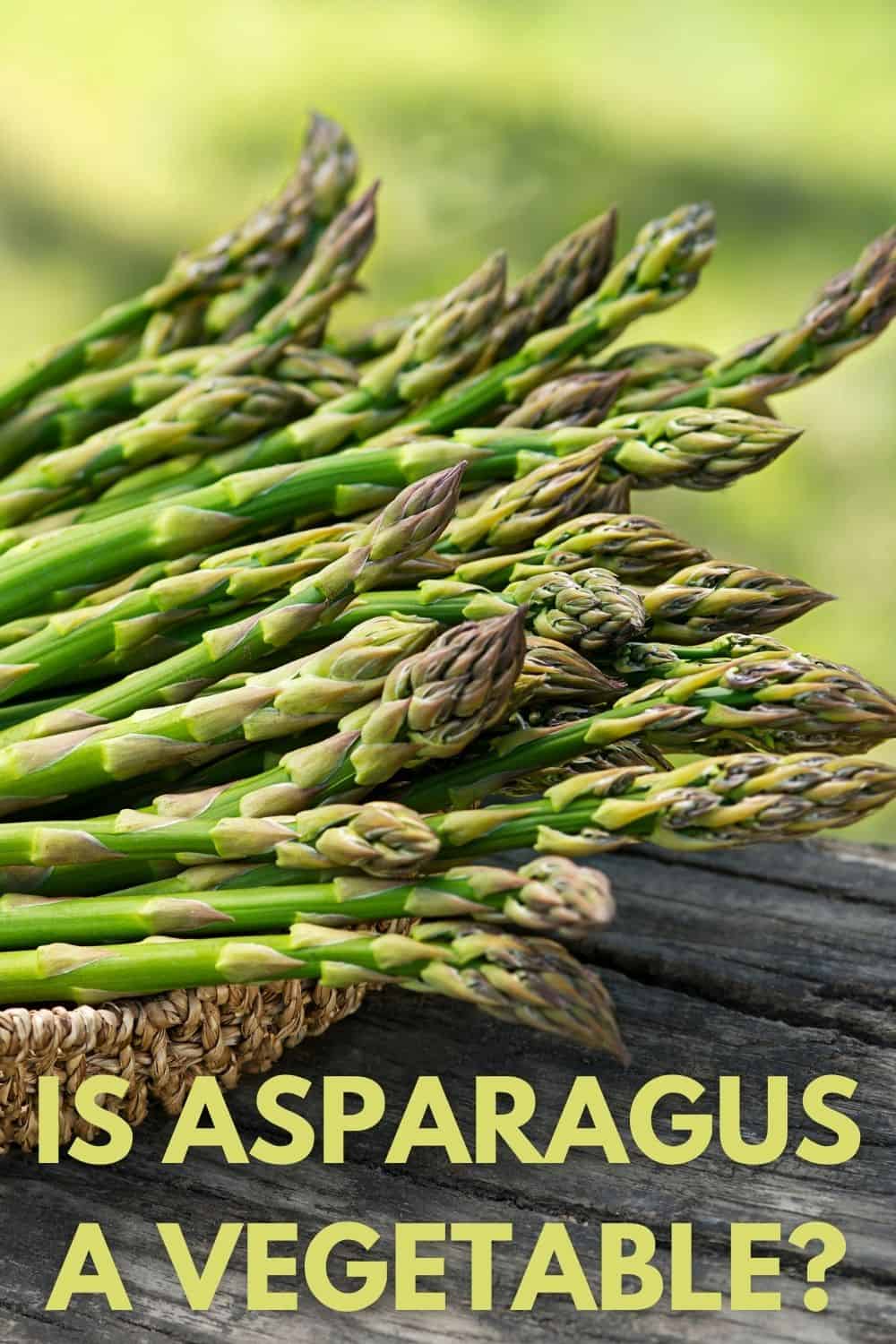Is asparagus a vegetable, a fruit, or an herb? Have you wondered too? Often seen as a sign that spring has come, asparagus is a delicious addition to many springtime dishes, including salads and veggie-filled frittatas.

Asparagus is a nutrient-dense perennial vegetable that grows in temperate climates around the world. The plant typically produces two or three stalks per stalk node, which are referred to as “spikes.” Each spike contains up to 20 spearlets that can grow up to 1 foot long. Asparagus has been revered for its health benefits since ancient times and should be an essential part of everyone’s diet. Every garden needs a small patch of asparagus!
With its unique appearance and definitive texture, which you will likely either hate or love, this vegetable also has a beautiful earthy taste that can add an excellent component to various dishes.
Growing Asparagus

The typical asparagus will usually come in a light-green color, but there are two other varieties as well: white and purple. The white asparagus has a milder taste than the green and is grown in larger quantities in France. It is white as it is grown without access to sunlight, and because of this, chlorophyll never develops.
The purple asparagus generally has a sweeter taste to it than the green. This is because it has a higher sugar content and also a low level of fiber. It was initially developed in Italy, and since then, it has been cultivated in New Zealand and the United States.
The green or, as it is also known, the common garden asparagus comes in different sizes, ranging from pencil-thin to almost three-quarters of an inch thick.
It is possible to grow asparagus from seeds; however, growing it from two to three-year-old roots is far more common. These roots or “rhizomes” are also referred to as “crowns.” Because these plants are perennial, they can, if cared for properly, produce yields for between 10 to 15 years.
Buying asparagus? Here are some tips for selecting the perfect spears

When buying asparagus, make sure it’s fresh, and not wilting or limp. The stems should be firm and bright green. Avoid bunches with yellowing, browned, or blackened tips.
Asparagus differs from other vegetables in that the thicker stalks tend to be the most tender. But thicker stalks are tasty too: you’ll just have to use a vegetable peeler to shave off the woodier part.
Usually, the top 6 inches of the asparagus spears are the juiciest, most tender part.
You will notice that many of the spears on the asparagus are white and woody; this is fine as you can simply trim these off before cooking them.
How to store asparagus

If you want or need to store your asparagus, it is much wiser not to cut it up before storage: instead, keep it whole. Place your asparagus bunch upright in a glass jar with about an inch of water at the bottom and cover it with a plastic bag to trap the moisture.
Make sure to use the asparagus within four days at most, once you have purchased or picked them from the garden. I don’t know why anyone would keep asparagus in the fridge for any length of time! We broil it and it disappears really fast. YUM!
Also, do not wash the spears of the asparagus before storing it, as bacteria can build up while it is stored in the fridge.
Ways to incorporate asparagus into your diet

I love asparagus season! We cook it in a few different ways, but my all-time favorite way to eat this spring delicatessen is broiled with just a pinch of salt and black pepper, and a splash of oil. Simple and delicious! But there are many other ways to eat asparagus, such as:
- raw in salads
- roasted with other vegetables
- with spaghetti
- stir-fried
- steamed asparagus with olive oil
- asparagus fritters
- add it to stews
- made into creamy asparagus soup
- you can even make asparagus pesto
Need more ideas? This asparagus cookbook has 365 recipes you can try.
The nutritional makeup of asparagus
Asparagus does not just taste and smell great; it also has many health benefits as it is an exceptionally good source of vitamins and minerals. In it, you will find vitamin B, C, E, K, calcium, zinc, magnesium, iron, folic acid, and copper, among other things.
Another key component of this vegetable is that it contains a mineral that helps regulate the transportation of glucose from the bloodstream into the cells. All in all, asparagus has been called one of the most well-balanced vegetables in its nutritional content.
Did you know one part of the asparagus plant is toxic?

Don’t be alarmed; you have not been eating something potentially harmful to you, but we thought this fun fact is worth adding. Although we have the lovely young stems that arrive nicely packaged in our supermarkets, there is a component of the plant that we do not consume, which is the fruit of the asparagus plant.
The bright red fruit is toxic to humans and other creatures, and even a tiny handful of them can cause one to experience vomiting and diarrhea. If you do ever accidentally eat the fruit from this plant, be sure to consume a bit of medical-grade charcoal, as this will help absorb the toxins before it enters your system.
The Origin And Classification Of Asparagus
The English word for this vegetable comes from the Latin term asparagus, derived from the Greek Aspharagos. It is thought that the Greek term also had a foreign source, being the Persian Asparag, meaning “sprout.”
Asparagus was initially grown in ancient Greece some 2,500 years ago, and some experts also believe that the Romans also had a love for it. The original asparagus grew in the wild and had a far more bitter taste and a darker hue than that which we find at our local grocer.
Nowadays, you will find the leading cultivators of asparagus are China, Mexico, Germany, Peru, and the United States. This is because the plant is best grown in temperate climates in soil that is not too high in acidity.
Asparagus comes from the Asparagaceae family, in which there are over 200 different species of plants. Some of these are grown for aesthetic reasons to be used by florists in creating arrangements. Still, the one we are looking at is the garden asparagus, or as it is technically known as Asparagus Officinalis.
Unlike most vegetables which are annuals and have to be replanted each year, asparagus is a perennial vegetable, meaning that it grows back each year, and this is why you may still find asparagus growing in the wild today.
FAQs about asparagus
Can you rehydrate limp asparagus?
It’s best if you use your asparagus before it goes limp, but if it happened, you can try this method to refresh it: trim the ends of the spears, put them in a bowl, and add enough water to cover them completely. Put a lid over the bowl and leave the spears to soak for a couple of hours. Then drain the water and rinse the spears under cold running water. your asparagus should look much better now and is ready to be cooked.
Is there a taste difference between white and green asparagus?
Yes, there is. While the green asparagus is
Can I cook white and green asparagus the same way?
Yes, with the exception that the white asparagus needs to be peeled before cooking because the skin is bitter.
Why does asparagus make your pee smell?
Asparagus pee is caused by asparagusic acid which produces many sulfurous byproducts that give your pee a nasty smell. But, not everyone gets the smell and not everyone can smell it.
Is Asparagus A Vegetable? Conclusion
As with a vast array of vegetables, asparagus is a delicious and healthy addition to any diet. However, even though there are definite nutritional benefits from consuming asparagus, be sure to maintain a well-balanced diet than drastically increase one’s asparagus intake.
So whether you were just curious about what asparagus is technically termed as or if you are hoping to find additional alternatives for your vegetable garden or your dinner table, you have indeed found something here. We hope we have been able to answer any lingering questions and that you’ve had a good taste of knowledge on asparagus.



